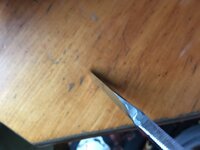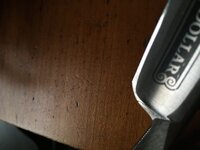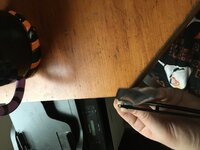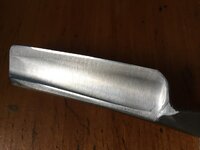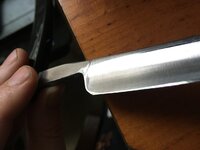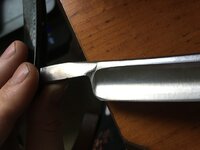What is the difference between the shoulder and the stabilizer of a straight razor - if in fact there is a difference?
Is the bit in the red rectangle the stabilizer and the bit in blue the shoulder?
And why do people buy GD 66s and remove the stabilizer if they could just buy a GD P81/1996 without a stabilizer?

Is the bit in the red rectangle the stabilizer and the bit in blue the shoulder?
And why do people buy GD 66s and remove the stabilizer if they could just buy a GD P81/1996 without a stabilizer?
